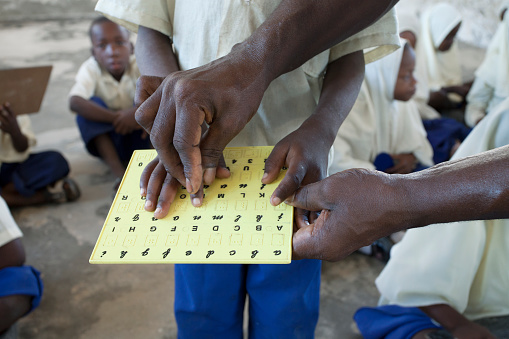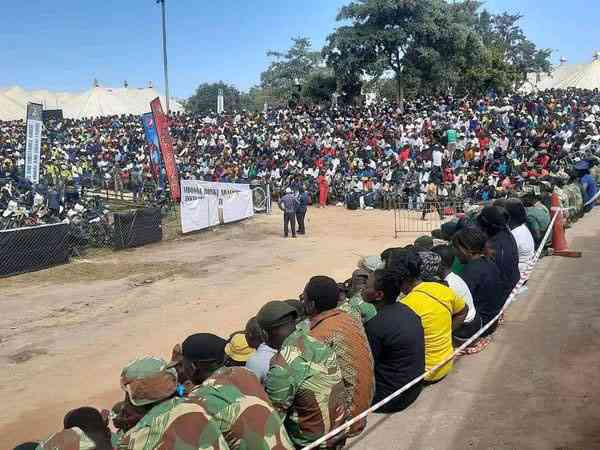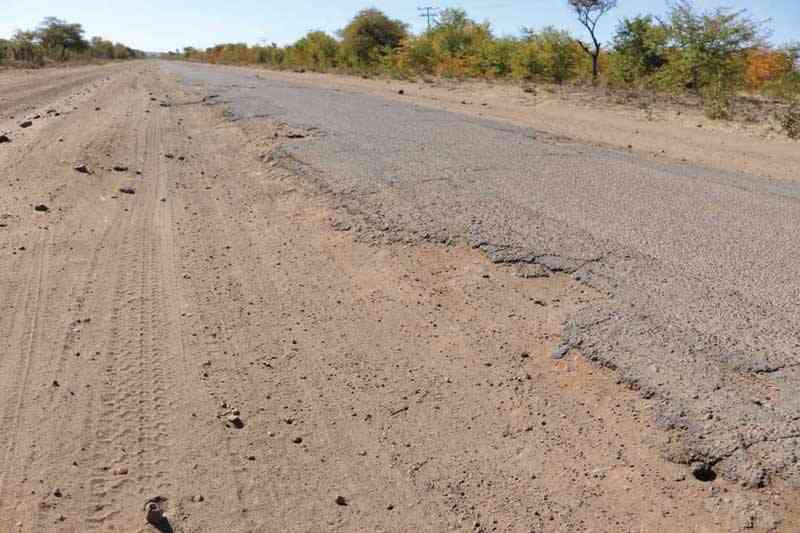
By Simate Simate
MANY people do not know that there is a disability called deafblindness. It is a unique and dual sensory disability that arises from a combined loss of the sense of hearing and the sense of vision.
It restricts the ability to access visual and auditory information, communicate and to move and locate objects in one’s environment. As a result, people with deafblindness lead isolated lives and little is known about them, especially in Africa.
For instance, there are hardly any available statistics on deafblindness and specialised services to support the functioning of deafblind people are poor in Africa and other countries of the global south.
A child with deafblindness in Africa usually lives like an outcast. To begin with, limited child health care services means that parents do not usually notice that their child has a combined sight and hearing loss.
Many times, only one impairment, usually the visual impairment, tends to be apparent. If they happen to detect both impairments, it is usually at a much later stage and by this time the child will have suffered the consequences of their misconception about their disability. Stigmatisation and labelling is common in many families where disability is still conceived as a misfortune.
When the couple realises that they have a disabled child, mothers are typically abandoned to raise the children on their own. This is a serious problem in several countries where there is no social protection and the mother has no established source of income.
Unlike most fellow children with deafblindness, I was lucky enough to have an educated, working and caring father who supported me in my education. By the time he died, when I was doing my junior secondary school, he had built a foundation for my upbringing.
- Chamisa under fire over US$120K donation
- Mavhunga puts DeMbare into Chibuku quarterfinals
- Pension funds bet on Cabora Bassa oilfields
- Councils defy govt fire tender directive
Keep Reading
My disability nevertheless haunted him. I would hear my parents whisper their helplessness and despair when I lost a great deal of my hearing and sight at the age of 10 and 15, respectively. It was a miracle to them that I continued to pass at school despite my deteriorating senses of sight and hearing. This is what encouraged them to keep me in school. They concentrated on enhancing my ability, rather than limiting me because of my disability.
Severe congenital deafblindness is usually mistaken for mental disorder or hyperactivity because of a deafblind child’s inability to perform visual and auditory tasks performed by their peers.
Mind you, this is Africa where there are still several myths about disability and its causes. This includes the belief that disability is caused by witchcraft and is a source of abomination to the family. Such myths usually make a family withdraw their child from the public eye when they discover that their child has deafblindness, a strange and perplexing disability.
Extreme home confinement of deafblind children isolates them from peers and deprives them of information and communication. This is how I developed the habit of talking and smiling to myself even when there are people around me. It is embarrassing when people around you discover that you are in your own world and communicating with imaginary friends.
This behaviour can be addressed by actively involving deafblind children in outdoor activities that promote self and community identification of deafblind people.
Outdoor activities also build peer relationships, stimulate intellectual development and promote health through physical exercises.
Similarly, home confinement of deafblind children with the view of protecting them from harm and peer abuse can result in overprotection.
I managed to overcome home confinement despite the difficulties of communication and it helped me to learn and work in mainstream society, which I encourage many parents of children with mild and moderate deafblindness to do.
I have a difficulty in accessing visual and auditory information because I have post-lingual acquired deafblindness. But, for children with severe congenital deafblindness, communication — especially with their mothers and caregivers is a serious problem.
Such children may communicate through body movements, gestures, facial expressions, vocalisation or use of objects.
For instance, a child may cross their legs to communicate to people the intention to go to the toilet. A child may communicate being thirsty by holding a cup. But the caregiver may not perceive or comprehend what the child’s behaviour means and fail to address these needs.
Competent communication partners, including caregivers and teachers, are essential in providing intervention to deafblindness. But few professionals working with children specialise in communicating with deafblind children and adults in Africa.
Although there is very little information about deafblindness in Africa, it is nevertheless common knowledge that children with severe disabilities are at a higher risk of abuse and neglect.
Deafblind children are unlikely to learn activities for daily living as a result of communication problems with their caregivers as well as restricted physical mobility. Thus, activities such as eating, dressing, bathing and toilet skills are difficult for deafblind children.
This exposes them to high risk of abuse because of their inability to detect, resist and communicate or report abuse as a result of their dual impairment. Moreover they are usually confined to their homes.
These children’s inability to perform activities for daily living also makes them become completely dependent on their caregivers who, in many instances, perceive them as a burden. Deafblind children who live with step-parents or non-biological parents are at even higher risk of maltreatment.
I was brought up by one biological parent and by a step-parent and did not experience as much abuse as other deafblind children because my disability was moderate during my childhood and I could perform all activities for daily living.
I could also detect, resist and report maltreatment during my childhood. This experience transformed me into a disability rights activist.
To this effect, I studied for a Master of International Human Rights Law at the University of Leeds and Master of Arts in International Child Protection at King’s College London.
I have incorporated my knowledge of human rights and child protection and communication for deafblindness in my advocacy for inclusion of children with disabilities, particularly deafblind children in Africa.
Deafblind people who depend on their sense of touch to access information and communicate are the most excluded and under-researched groups in society.
The attainment of the sustainable development goals will remain an illusion for deafblind people in many countries especially in Africa if they continue to be invisible and excluded from policy and social services.
I responded to the gap of scholarly knowledge and lack of intervention concerning deafblindness in my country by completing a master of pedagogical sciences in communication and deafblindness in 2020 at the University of Groningen in the Netherlands, alongside a PhD in Education Policy Studies at Stellenbosch University, which I am yet to complete.
My scholarly work has enhanced my capacity to advocate for inclusion of deafblind people in Africa.
I am the co-ordinator of the Deafblind Zambia Programme (DBAZ) and secretary of the Africa Federation of the Deafblind (AFDB).
The DBAZ is collaborating with the Norwegian charity, Signo, and the Finnish charity, Abilis Signo is supporting inclusive education in Zambia and Malawi, while Abilis is providing advocacy capacity to AFDB members.
Apart from Zambia and Malawi, Lesotho and South Africa are the two southern African countries that have formed advocacy groups for deafblindness inclusion and are collaborating with the DBAZ.
As part of raising awareness about deafblindness in Africa, the AFDB will host the World Federation of the 6th Deafblind General Assembly and the 12th Helen Keller World Conference on Deafblindness in May 2022 in Nairobi, Kenya.
I will present my study findings on intervention to deafblindness to promote meaningful communication among deafblind peers in Zambia.
- Simate Simate is a Zambian living with deafblindness. He is a disability rights advocate for the inclusion of deafblindness in Africa, national co-ordinator of the Deafblind Zambia Programme and secretary of the Africa Federation of the Deafblind. Simate holds master’s degrees in arts, international human rights law and pedagogical sciences. He is also a Canon Collins PhD scholar in education policy.











